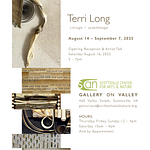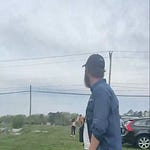I want to start this episode with a story. Prior to moving here, I took cello lessons for three years with Mary Hardy. One evening instead of a lesson, she dragged me to a Town Council meeting because they were discussing the arts. Of course, I went. Some may remember the previous chambers were located where the offices are now. The dais took up one third of the room. And, Mayor Thacker always sat in a chair outside what used to be his office. Mary spoke of the importance of the arts and how they help build and sustain a community. Those who knew her remember her flowing skirts and colorful tops, but mostly it’s her passion for her creative work and the people she taught. She spoke to the inclusivity the arts provided, and the demographics of her students supported her words. She taught families of all socio-economic backgrounds and from diverse cultures. This welcoming inclusiveness was my initial experience with Scottsville.
The next speaker wasn’t quite so inclusive. I paraphrase her words, but she basically said, “We welcome everyone to come to Scottsville and spend their money so long as they leave.”
The dichotomy of these two messages left a lasting impact on me. At last week’s Planning Commission meeting several speakers asked “Who are we?”
I heard that we are a welcoming community, but we don’t want any more houses in town. I wonder, do more houses make us an unwelcoming community? Do we want to welcome young families to have a small town to raise their children in? Or, do we want to shut them out? Do we want to welcome our aging population to stay in a community they have lived in for decades? Or, do we want to send them to an institution to live out their final years? Do we want to welcome young professionals who can tele commute and add value to our businesses? Or, do we want to shut them out? (As an aside, for our business community broadband-fiber is available).
Then I heard about infrastructure. Yes, the roads are an issue. Over 7,000 cars travel through Scottsville from Buckingham and Fluvanna to points north. Town Council and staff have a working relationship with VDOT.
Other infrastructure issues mentioned were water and sewer and the A. Raymon Thacker Flood Control System.
In 2018, Rivanna Authorities completed an upgrade to a Granulated Activated Carbon system to the water treatment plants. At the time, the Scottsville system was at one third capacity. The tank on Blenheim Road is never filled completely because drinking water has a limited shelf life.
The A. Raymon Thacker Flood Control System is a major concern. When Sarah Wood spoke to what could happen should the dam behind Doug’s Maytag should be breached, Scottsville’s downtown area would be devastated. This system, which includes Scottsville Lake, the dam, the levee, and the pump station. This system is regularly maintained with scheduled inspections by The Army Corp of Engineers and the Department of Conservation and Recreation. During a flood incident, our Fire Department and some community members spend upwards of 72 straight hours of pumping water from the Mink Creek to the James River.
Wouldn’t it be nice to have more people in our town available to volunteer for our Fire Department and participate in flooding instances?
To the two applications before the Planning Commissions purview there is one glaring difference. The Bird Street proposal comes out of the West Downtown Small Area Plan that the Commission and Town Council worked on for more than two years. The Blenheim proposal is wide open. Perhaps it is wise to go through the same process on Blenheim as west side of Downtown Scottsville. The Paulette tract is over 200 acres. And, to Sarah Wood’s and Caitlyn Walls comments, the Mink Creek runs through this entire parcel. It is the Mink Creek that has historically flooded Scottsville, and this needs to be of paramount importance to any development in this area.
At their November meeting, Planning Commission will vote on whether to recommend or not the applications to Town Council. Regardless of their decision, Council will go through the same process that the Commission did. However, where the Commission had ninety days to review, Council’s time is indefinite. This allows them the opportunity to study the Commissioners’ work and negotiate with the applicant on any issue brought up by the public and/or the Commission.
Now it is time for “We don’t want to be a Crozet or Columbia.”
Columbia is a nonstarter. First, they never had a thriving downtown or uptown area that Scottsville has. Secondly, they are not protected from the James River.
Crozet is far more interesting to talk about. First, Crozet is not an incorporated town. Secondly, it is a growth area for the County. With this, Crozet falls under the jurisdiction of the County’s Planning Department. As an incorporated town, Scottsville has its own Planning Commission with a membership requirement of being a resident. It is the planning commission’s job to do the initial review, fact gathering, public hearings on all applications. This is where the process is currently, and it is to the Commissioners credit that the public hearings on Bird and Blenheim were held early on which allows public comments to be an integral part of the process.
So, the question is: Geographically will Scottsville ever become a Crozet? The answer is only if it reverts to the County by giving up its independent town status. The challenge is how will Scottsville maintain its culture of being an historic river town that is said to be welcoming and inclusive?
When I first came on Council in 2006, it was understood that develop was detrimental to the Town. I will admit, I went along with this. Then I happened to be in Palmyra one Saturday afternoon and a friend and I stopped into a restaurant on the outskirts of Lake Monticello. It was around 5:30 and there was one other table occupied. When we left 45 minutes later there was a waiting line out the door. I changed my thoughts on no growth. It was apparent that people from the Lake came out for dinner. It became apparent to me that we needed more people in our town who could support our businesses, especially the restaurants. It is our restaurants that collect the meals tax that is our highest source of revenue. If our residents are not supporting our businesses, then, quite frankly, they don’t have “any skin in the game.” We have been intentional in not bringing back the second layer of property tax on our property owners.
This brings me to the last two comments I have heard over the years. The first, “Scottsville doesn’t support its own.” The second, “Let’s take a bet on how long that business lasts.”
It is time for us to say who we are as a town. Based on my personal experiences, I believe we are a welcoming and inclusive community. Yet, I hear from others that say we are, but don’t necessarily back it up with their actions.
So, Scottsville, who are we?











